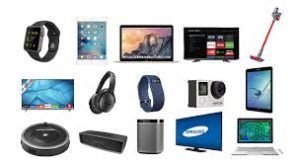
Smart home devices are advanced gadgets and appliances that connect to a network to provide automated, efficient, and convenient control of various household functions. These devices use technologies like Wi-Fi, Bluetooth, and Zigbee to communicate and can be controlled remotely via smartphones, tablets, or voice assistants. Here’s an overview of popular smart home devices and their features:
Key Features of Smart Home Devices:
- Connectivity:
- Description: The ability to connect to the internet or other devices.
- Features:
- Wi-Fi: Common for easy integration with home networks.
- Bluetooth: Used for short-range communication.
- Zigbee/Z-Wave: Low-power wireless communication protocols for smart home devices.
- Automation:
- Description: Capability to automate tasks and routines.
- Features:
- Scheduling: Set timers and schedules for automated actions.
- Scenes: Combine multiple actions into a single command.
- Triggers: Activate actions based on specific conditions (e.g., motion detection, time of day).
- Voice Control:
- Description: Integration with voice assistants for hands-free control.
- Features:
- Amazon Alexa: Compatible with Amazon’s Echo devices.
- Google Assistant: Compatible with Google Home devices.
- Apple Siri: Works with Apple HomeKit.
- Remote Access:
- Description: Control devices from anywhere using a mobile app.
- Features:
- Mobile Apps: Apps for iOS and Android for remote control and monitoring.
- Web Interfaces: Some devices offer control through web browsers.
- Energy Efficiency:
- Description: Designed to reduce energy consumption and costs.
- Features:
- Energy Monitoring: Track energy usage in real-time.
- Smart Scheduling: Optimize device usage based on patterns and needs.
- Security:
- Description: Enhanced security features to protect the home.
- Features:
- Encryption: Secure communication between devices.
- Two-Factor Authentication: Additional security for accessing device controls.
Popular Smart Home Devices and Their Features:
- Smart Speakers:
- Example: Amazon Echo, Google Nest Audio
- Features:
- Voice control for smart home devices.
- High-quality sound for music playback.
- Integration with various smart home ecosystems.
- Smart Lights:
- Example: Philips Hue, LIFX
- Features:
- Adjustable brightness and color.
- Scheduling and automation.
- Voice and app control.
- Smart Thermostats:
- Example: Nest Learning Thermostat, Ecobee SmartThermostat
- Features:
- Automated temperature adjustments based on habits.
- Remote control via app.
- Energy usage reports and savings suggestions.
- Smart Locks:
- Example: August Smart Lock, Schlage Encode
- Features:
- Keyless entry with smartphone.
- Temporary access codes for guests.
- Integration with security systems.
- Smart Cameras:
- Example: Arlo Pro, Ring Stick Up Cam
- Features:
- HD video quality with night vision.
- Motion detection and alerts.
- Cloud storage for video recordings.
- Smart Plugs:
- Example: TP-Link Kasa Smart Plug, Wemo Mini Smart Plug
- Features:
- Control standard appliances remotely.
- Scheduling and automation.
- Energy monitoring.
- Smart Doorbells:
- Example: Ring Video Doorbell, Nest Hello
- Features:
- Video feed of visitors.
- Two-way audio communication.
- Motion detection and alerts.
- Smart Appliances:
- Example: Samsung Smart Refrigerator, LG Smart Washer
- Features:
- Remote monitoring and control.
- Energy-efficient operation.
- Integration with other smart home devices.
- Smart Security Systems:
- Example: ADT Smart Home, SimpliSafe
- Features:
- Comprehensive security coverage.
- 24/7 monitoring.
- Integration with other smart devices for enhanced security.
- Smart Hubs:
- Example: Samsung SmartThings Hub, Hubitat Elevation
- Features:
- Central control for various smart devices.
- Automation and scene creation.
- Integration with multiple smart home ecosystems.
Choosing Smart Home Devices:
When selecting smart home devices, consider the following factors:
- Compatibility: Ensure devices are compatible with your existing smart home ecosystem (e.g., Alexa, Google Assistant, Apple HomeKit).
- Ease of Use: Look for devices with intuitive apps and user-friendly interfaces.
- Features: Consider the features you need, such as automation, remote access, and energy monitoring.
- Security: Choose devices with strong security features to protect your home and data.
- Budget: Set a budget and compare devices within your price range for the best value.
By understanding these features and considering your specific needs, you can choose the best smart home devices to enhance your home’s convenience, security, and efficiency.








